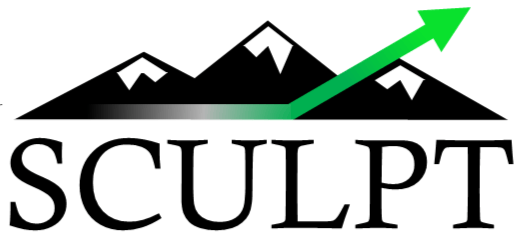The Ultimate Website Redesign Checklist: Boost UX, SEO, and Lead Generation
In an ever-evolving digital landscape, optimizing your website is critical to staying ahead of the competition and meeting users' needs and expectations. Whether you're looking to improve user experience (UX), bolster SEO, or generate more leads, a successful website redesign requires thorough planning, strategy, and execution. The process can be complex, but a well-structured and actionable checklist can streamline the journey and ensure a seamless transition.
In this guide, we will provide the ultimate website redesign checklist to help you navigate the key steps and considerations involved in revamping your digital presence. From setting objectives and assessing your current site to implementing design improvements and launching your new website, we’ll guide you through every essential aspect of the process. Whether you operate a small business or manage a large enterprise, this checklist will empower you to refine your online presence, optimize your website's performance, and position your brand for success in the digital realm.
1. Establish Clear Redesign Objectives
Before beginning any website redesign project, it's essential to establish clear objectives that align with your business goals. Identifying the key reasons for the redesign will guide your strategy and decision-making processes throughout the project. Some common objectives include:
- Enhancing user experience (UX)
- Improving website structure and navigation
- Boosting search engine optimization (SEO)
- Increasing conversion rates and lead generation
- Updating brand identity and website aesthetics
Ensure all stakeholders agree on the objectives to maintain a coherent and focused direction during the redesign process.
2. Analyze and Assess Your Current Website
To identify areas for improvement, thoroughly audit your existing website by analyzing its performance, design, and user engagement. Use tools like Google Analytics, Google Search Console, and Hotjar to gather data on key performance indicators (KPIs), such as:
- Bounce rate
- Page load time
- Mobile-friendliness
- SEO performance (e.g., organic traffic, keyword rankings)
- User engagement (e.pub, heatmaps, user recordings)
Evaluating your current website's strengths and weaknesses can help you prioritize the changes needed to achieve your redesign objectives.
3. Plan Your Website Structure and Navigation
A clear, well-organized website structure benefits your users and search engine crawlers, enhancing UX and SEO. Follow these steps to optimize your site's structure and navigation:
- Conduct keyword research: Use keyword research tools like Google Keyword Planner, SEMRush, or Ahrefs to identify relevant search terms that align with your products, services, and content.
- Create a sitemap: Develop a visual representation of your new website structure, outlining the hierarchy of pages and their relationships. Utilize your keyword research to inform page titles and URLs.
- Optimize navigation: Design clear and intuitive navigation menus, incorporating search functionality and ensuring mobile responsiveness.
- Prioritize UX: Focus on creating a user-friendly experience with clear calls to action (CTAs), scannable content, and easy-to-find information.
4. Design for Aesthetics, Functionality, and UX
An appealing website design that prioritizes UX is crucial for engagement, conversion rates, and SEO. Consider these design principles during your website redesign:
- Responsive design: Ensure your website functions seamlessly on all devices, including desktop, tablet, and mobile.
- Typography and legibility: Choose easy-to-read fonts and a font hierarchy that guides readers through your content.
- Use of whitespace: Strategically incorporate whitespace to create visual balance, improve readability, and separate distinct page elements.
- Consistent branding: Reflect your brand's identity consistently through your color palette, logo, typography, and other design elements.
- Imagery and multimedia: Utilize high-quality images, videos, and other multimedia to engage users and convey your brand message.
- Accessibility: Cater to all users by implementing accessibility best practices, such as providing text alternatives for images, ensuring keyboard navigation functions, and using appropriate color contrast.
5. Implement On-Page SEO Best Practices
Optimizing on-page SEO elements will boost your website's visibility and organic traffic. Focus on the following aspects during your redesign:
- Title tags: Create unique and concise title tags that incorporate target keywords and accurately describe your content.
- Meta descriptions: Write compelling meta descriptions that encourage users to click on your website from search engine results pages (SERPs).
- Headers: Structure your content using header tags (H1, H2, H3, etc.) to provide a clear hierarchy and enhance readability.
- URL structure: Design meaningful and concise URLs that include target keywords and reflect your sitemap hierarchy.
- Image optimization: Compress images, add descriptive filenames and alt tags, and consider using WebP format for faster loading times.
- Internal and external linking: Establish a strong internal linking structure that connects related content and includes relevant external links to authoritative sources.
6. Optimize Website Speed and Performance
Fast-loading websites improve user experience and contribute to higher search engine rankings. To optimize site speed and performance, focus on:
- Page size and file compression: Reduce page sizes by compressing images, minifying CSS, HTML, and JavaScript files, and using gzip compression.
- Browser caching: Implement browser caching to store static files locally, improving site performance for returning visitors.
- Content Delivery Network (CDN):
Utilize a CDN to serve your website's content from geographically distributed servers, enhancing loading speed for users in different locations.
- Server Optimization: Opt for a fast and reliable hosting provider and consider upgrading your server specifications for better performance.
7. Test, Launch, and Monitor Your Redesigned Website
Prior to launching your new website, conduct thorough testing to ensure it functions as intended. Check for broken links and compatibility across different browsers and devices, and validate code using tools like W3C's Markup Validation Service. After launching your redesigned website, continuously monitor its performance using analytics tools, address UX issues, evaluate SEO performance, and gather feedback from users to make data-driven improvements.
Take Control of Your Website Performance with Sculpt Marketing & Consulting
Mastering Google Analytics is key to unlocking your website's full potential and optimizing its performance. By leveraging the insights offered by this powerful tool, you'll be able to make informed decisions and drive better results through data-driven strategies.
At Sculpt Marketing & Consulting, we understand the value of website performance analysis and Google Analytics expertise. Our team of seasoned professionals is here to help you navigate the complex digital landscape, providing guidance and support every step of the way. Whether you need assistance with setting up Google Analytics, interpreting data, or optimizing website performance, Sculpt Marketing & Consulting has you covered.
Schedule a consultation with our dedicated
digital marketing experts today, and let us help you turn data into actionable insights for your business. Together, we'll drive your online success through strategic monitoring and analysis while confidently propelling you toward your growth objectives.










